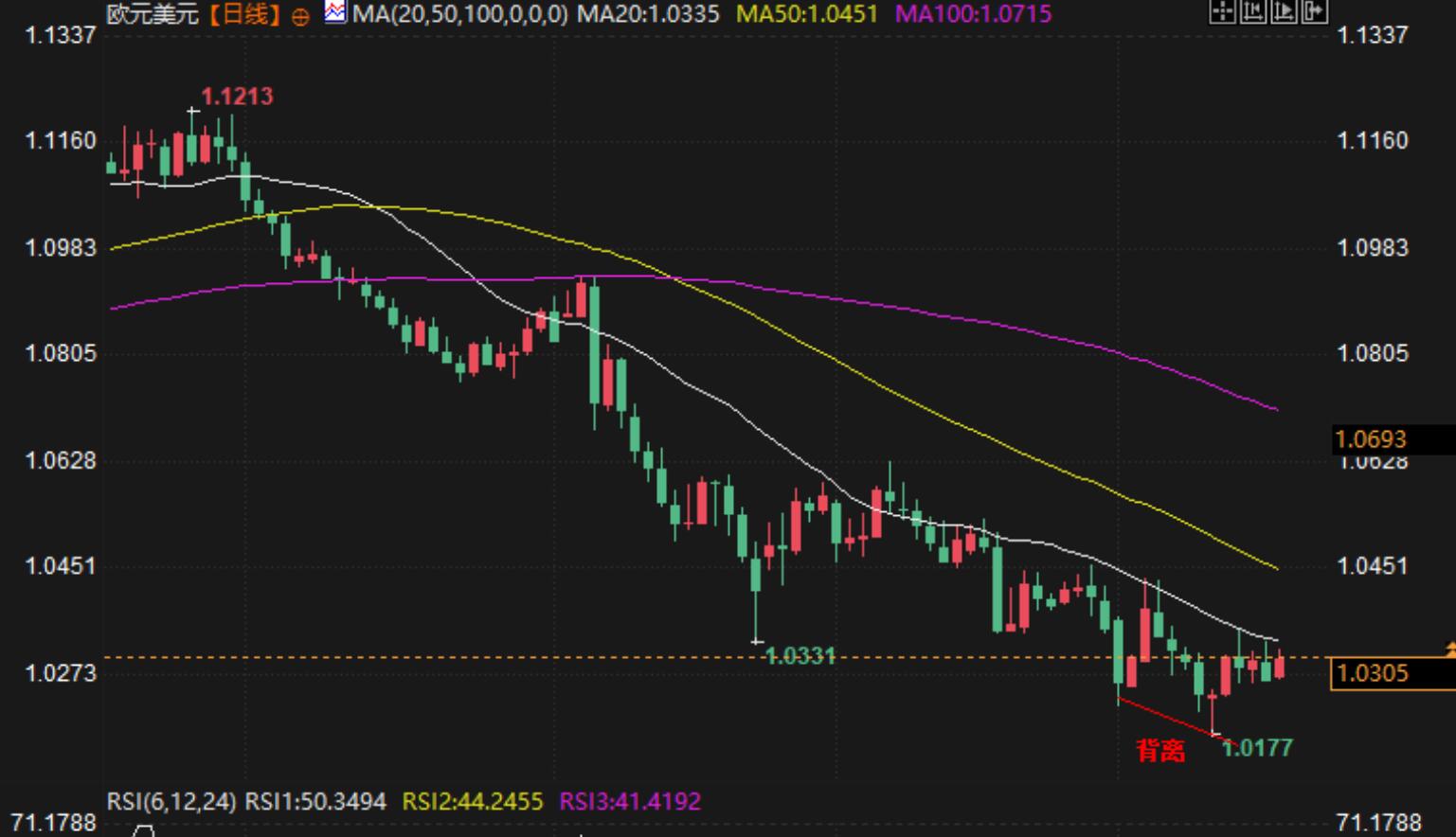Forex Trading Analysis: What will be the trend of EUR/USD?
On Monday (January 20th), as market sentiment gradually recovered, the euro/dollar (EUR/USD) rose to a level close to 1.0300 in just a few hours, mainly driven by investors' attention to Trump's upcoming inauguration. The safe haven demand for the US dollar has weakened, and the market is waiting for policy developments after Trump's inauguration, especially possible import tariffs and domestic economic stimulus measures. Meanwhile, the Federal Reserve is widely expected to maintain current interest rates until at least its policy meeting in May.
Fundamental analysis: Market sentiment and the impact of Trump's inauguration
As Trump's inauguration day approaches, market expectations for future policies are beginning to affect the foreign exchange market, especially the euro against the dollar. Trump is expected to declare a national emergency shortly after taking office, with plans to achieve self-sufficiency by promoting domestic energy production, and may revoke some of the Biden administration's climate change policies. This policy move is believed to have the potential to stimulate US economic growth and drive up inflationary pressures, thereby increasing the probability of the Federal Reserve maintaining current interest rates.
According to data from the CME FedWatch tool, traders expect the Federal Reserve to maintain an interest rate range of 4.25% -4.50% in the next three policy meetings. On the contrary, Morgan Stanley analysts believe that the Federal Reserve may cut interest rates in March due to the slowdown in core inflation shown by December CPI data. However, market expectations for Trump's policies generally lean towards favoring the US dollar, especially with the expectation that the introduction of a new round of tariff policies may exacerbate the strong position of the US dollar.
In addition, the economic outlook of the eurozone still faces some uncertainty. European Central Bank (ECB) officials have recently issued frequent dovish signals, and it is expected that the bank will take a series of interest rate cuts in future meetings. According to market expectations, the European Central Bank may cut interest rates by a total of 100 basis points by mid summer, with each cut being 25 basis points. The expectation from the European Central Bank has intensified the weak sentiment towards the euro, especially against the backdrop of slowing global economic growth, ongoing pressure on oil prices, and increased economic uncertainty in the eurozone that may be triggered by Trump's tariff rhetoric.
Technical analysis: EUR/USD trend maintains range bound volatility
The euro against the US dollar began to rebound earlier this week, with prices once again approaching 1.0310, continuing last week's correction trend. It is worth noting that the euro against the US dollar has maintained a volatile consolidation around 1.0300 over the past four trading days, hitting a two-year low of 1.175 last week before experiencing a short-term rebound. This rebound indicates the recovery of market sentiment, especially the weakness of the US dollar, which has driven the recovery of the euro.
However, from a technical perspective, the long-term prospects of the euro against the US dollar remain under pressure. Although the relative strength index (RSI) showed a slight rebound on the 14th, forming a high low comparison (around 35.00), price movements failed to break through the downward trend range, and all short-term to long-term index smooth moving averages (EMAs) showed a downward trend, indicating that the euro still faces significant selling pressure.
If the price declines, the low of 1.0175 on January 13th will become a key support level, and if the price falls below this level, it may further confirm the downward trend of EUR/USD. On the contrary, if the price rebounds and breaks through the important resistance level of 1.0437, it may bring some rebound momentum to the euro, but currently, the possibility of a breakthrough is low.

Future Trends and Prospects
Looking ahead, the trend of the euro against the US dollar may continue to be influenced by market sentiment and upcoming US policies. Against the backdrop of Trump's upcoming inauguration, investors will closely monitor his policy direction, particularly the potential tariff measures and domestic economic stimulus policies. If Trump's policies can stimulate economic growth in the United States and increase inflationary pressures, the US dollar may experience further appreciation. In Europe, the market expects the European Central Bank to take more interest rate cuts this year, which will continue to put pressure on the euro.
Technically speaking, the EUR/USD exchange rate may continue to fluctuate and consolidate around 1.0300. If the price continues to be under pressure and falls below the support level of 1.0175, it may further test the downward target. Overall, changes in market sentiment will be a key factor influencing the short-term trend of the euro.
Tips:This page came from Internet, which is not standing for FXCUE opinions of this website.
Statement:Contact us if the content violates the law or your rights
